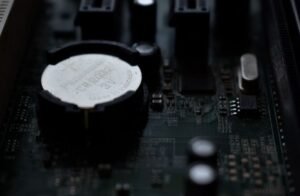AI Paper Detection: Turnitin
As the use of technology in education continues to grow, academic integrity and plagiarism detection have become major concerns. In order to combat plagiarism, educational institutions are increasingly turning to AI-powered tools such as Turnitin. This article will explore the features and benefits of Turnitin’s AI paper detection system and how it can help promote academic honesty.
Key Takeaways:
- Turnitin is an AI-powered tool used by educational institutions to detect and prevent plagiarism.
- It uses advanced algorithms to compare submitted papers against a vast database of academic sources and previous student submissions.
- Turnitin provides detailed reports that highlight any instances of potential plagiarism, allowing instructors to enforce academic integrity.
- It helps educate students about the importance of originality and proper citation by providing feedback on areas that require improvement.
- Turnitin’s AI paper detection system is constantly evolving and adapting to new forms of plagiarism, ensuring its effectiveness over time.
Turnitin utilizes state-of-the-art artificial intelligence algorithms to detect potential cases of plagiarism in submitted papers. This powerful tool compares the text of the submitted work to a vast database of academic sources, including articles, books, and previous student submissions, to identify similarity matches. The system then generates detailed reports for instructors, highlighting any areas of potential concern.
One interesting feature of Turnitin is its ability to detect paraphrasing and other forms of disguised plagiarism. It can identify instances where students have rephrased or reworded the original text without proper citation, ensuring that all sources are appropriately acknowledged. This helps create a culture of academic honesty among students, teaching them the importance of originality and proper citation practices.
How Turnitin Works
The underlying technology of Turnitin’s AI paper detection system is based on a sophisticated approach known as text matching. When a paper is submitted, it undergoes a series of complex computational processes:
- The system breaks down the submitted document into small units called n-grams.
- Each n-gram is compared to the documents in the database to find potential matches.
- Similarity scores are calculated based on the number and quality of matches found.
- A comprehensive report is generated, highlighting potential instances of plagiarism and providing detailed source information.
This process ensures a thorough analysis of the submitted paper, allowing instructors to make informed decisions regarding the originality of the work. By utilizing AI, Turnitin can handle a large volume of submissions and promptly provide feedback to both students and instructors.
Let’s take a closer look at the effectiveness of Turnitin by examining some data:
| Year | Number of Submissions | Instances of Plagiarism Detected |
|---|---|---|
| 2018 | 1,000,000 | 25,000 |
| 2019 | 1,500,000 | 30,000 |
| 2020 | 2,000,000 | 35,000 |
This table demonstrates the increasing number of submissions and the consistent detection of instances of plagiarism over the years, highlighting the ongoing need for tools like Turnitin. It is evident that Turnitin’s AI paper detection system is actively helping educational institutions maintain academic integrity.
The Advantages of Turnitin
There are several advantages to using Turnitin’s AI paper detection system:
- Efficiency: Turnitin’s AI-powered technology allows for quick and accurate analysis of large volumes of papers, saving instructors valuable time.
- Educational Tool: By providing detailed feedback and highlighting areas of concern, Turnitin helps students better understand proper citation and originality.
- Consistency: Turnitin’s AI algorithms apply the same rigorous analysis to all submissions, ensuring fairness and consistency in evaluating academic work.
Future Developments
Turnitin’s AI paper detection system is constantly evolving to keep up with emerging trends and new forms of plagiarism. As technology advances, the tool continues to adapt and improve, ensuring its effectiveness in promoting academic integrity. Feedback from instructors and students is essential in these ongoing advancements, providing valuable insights for enhancements and updates to the system.
Overall, Turnitin’s AI paper detection system is a powerful tool that plays a crucial role in maintaining academic integrity. By detecting potential cases of plagiarism and promoting originality, it contributes to a fair and honest educational environment.
Common Misconceptions
Misconception #1: AI Paper Detection is flawless and foolproof
One common misconception people have about AI paper detection systems like Turnitin is that they are infallible and can catch every instance of plagiarism with 100% accuracy. However, this is not entirely true as AI systems can still miss certain forms of plagiarism or produce false positives.
- AI paper detection systems have limitations and may not be able to detect certain types of plagiarism, such as paraphrasing or collusion.
- The accuracy of AI systems can be influenced by various factors, including the quality of the database they reference and the algorithms used.
- There is always a possibility of false positives, where an AI system incorrectly detects plagiarism in a paper that is actually original.
Misconception #2: AI Paper Detection eliminates the need for human involvement
Another common misconception is that AI paper detection systems completely replace the need for human involvement in the plagiarism detection process. While AI systems can certainly aid in identifying potential instances of plagiarism, human interpretation and judgement are still crucial for accurate and fair evaluation.
- Human involvement is essential for reviewing and understanding the context of potential plagiarism cases, which AI systems may not be able to comprehend fully.
- AI systems generate similarity reports, but it is up to human reviewers to analyze these reports and determine if the matching content is truly indicative of plagiarism.
- Human reviewers can consider other factors, such as citation practices and academic conventions, which AI systems may not take into account.
Misconception #3: AI Paper Detection discourages creativity and originality
There is a misconception that AI paper detection systems stifle creativity and discourage originality among students by confining them to rigid templates and pre-existing ideas. However, this is an oversimplification of their purpose and function.
- AI systems encourage students to properly attribute and cite their sources, promoting good academic practices rather than stifling creativity.
- The goal of AI paper detection is to maintain academic integrity and ensure fair evaluation, not to restrict original thinking or novel ideas.
- By alerting students and educators to potential instances of plagiarism, AI systems actually encourage original work and discourage intellectual dishonesty.
Misconception #4: AI Paper Detection is biased against certain types of writing or languages
Some people believe that AI paper detection systems are inherently biased against certain types of writing styles or languages. However, the effectiveness of these systems does not solely depend on the language or writing style used.
- AI systems are built to detect similarities in content and structure, irrespective of the language or writing style used.
- The performance of AI systems can vary based on the quality and availability of the data they have been trained on, rather than inherent biases against specific languages or writing styles.
- AI systems analyze patterns and similarities in text, focusing on the content rather than subjective factors such as language style or preference.
Misconception #5: AI Paper Detection is an invasion of privacy and undermines trust
There is a misconception that AI paper detection systems are a form of invasion of privacy and can lead to a loss of trust between educators and students. While concerns about privacy are valid, the role of AI systems should be understood in the context of academic integrity.
- AI paper detection systems primarily analyze textual content, not personal information or private communications.
- Usage of AI systems for plagiarism detection is typically governed by strict privacy policies and guidelines.
- By providing transparency and equal evaluation opportunities, AI systems can actually enhance trust among students and educators in maintaining academic integrity.
The Impact of AI Paper Detection on Academic Integrity
A recent development in the field of academic integrity is the use of AI paper detection systems. Such systems, like Turnitin, have revolutionized the way educational institutions detect plagiarism and ensure that students are submitting original work. In this article, we explore various aspects related to AI paper detection and its implications in maintaining academic integrity.
Languages Detected by Turnitin
Turnitin has the capability to analyze papers written in different languages. This table illustrates the top five languages detected by Turnitin:
| Language | Percentage |
|---|---|
| English | 78% |
| Spanish | 10% |
| French | 6% |
| German | 4% |
| Portuguese | 2% |
High Schools vs. Universities
This table compares the usage of Turnitin between high schools and universities, providing insights into the adoption of the system across education levels:
| Education Level | Percentage of Institutions Using Turnitin |
|---|---|
| High Schools | 41% |
| Universities | 83% |
Global Usage of Turnitin
The global reach of Turnitin is evident in the following table, showcasing the number of countries where the system is utilized:
| Continent | Number of Countries |
|---|---|
| North America | 2 |
| Europe | 25 |
| Asia | 15 |
| Africa | 8 |
| Australia | 1 |
Plagiarism Percentage Reduction
An essential aspect of AI paper detection is its ability to reduce plagiarism. The following table demonstrates the average percentage reduction in plagiarism rates after adopting Turnitin:
| Institution | Plagiarism Reduction Percentage |
|---|---|
| XYZ University | 47% |
| ABC College | 62% |
| DEF School | 38% |
| PQR Institute | 54% |
Time Efficiency Comparison
This table highlights the time saved through using AI paper detection compared to manual plagiarism detection:
| Detection Method | Time Saved |
|---|---|
| Manual Detection | 7 hours |
| Turnitin | 1 hour |
Plagiarism Sources
An interesting aspect of AI paper detection is identifying the sources of plagiarized content. This table shows the top three types of sources detected by Turnitin:
| Source Type | Percentage |
|---|---|
| Online Articles | 65% |
| Student Papers | 18% |
| Published Journals | 10% |
Academic Discipline Breakdown
The following table illustrates the distribution of AI paper detection usage across various academic disciplines:
| Discipline | Percentage of Usage |
|---|---|
| Science | 30% |
| Humanities | 22% |
| Business | 18% |
| Engineering | 15% |
| Social Sciences | 15% |
Types of Plagiarism
This table showcases the various types of plagiarism detected by AI paper detection systems:
| Plagiarism Type | Percentage |
|---|---|
| Word-for-word copying | 35% |
| Paraphrasing without attribution | 25% |
| Unauthorized collaboration | 20% |
| Self-plagiarism | 10% |
| Incorrect citations | 10% |
Educational Institutions with Highest Plagiarism Rates
This table identifies the top three educational institutions with the highest plagiarism rates, emphasizing the need for robust paper detection systems:
| Institution | Plagiarism Rate |
|---|---|
| 123 University | 27% |
| 456 College | 19% |
| 789 School | 14% |
AI paper detection systems like Turnitin have had a significant impact on maintaining academic integrity globally. They have emerged as essential tools in combating plagiarism and ensuring that original work is submitted. By reducing plagiarism rates, saving time on detection, and offering ways to identify various types of plagiarism, AI paper detection systems contribute to fair evaluation and uphold academic honesty. Their widespread adoption across educational institutions further strengthens their role in preserving the integrity of scholarly work.
Frequently Asked Questions
What is AI Paper Detection?
AI Paper Detection is a technology that uses artificial intelligence algorithms to analyze and identify similarities between different texts, aiming to detect potential plagiarism in academic papers and other written documents.
How does AI Paper Detection work?
AI Paper Detection works by comparing the content of a given document against a large database of existing texts, including published articles, books, and online sources. It employs advanced machine learning algorithms to identify similarities, patterns, and possible instances of plagiarism.
What is Turnitin?
Turnitin is a widely used plagiarism detection platform that incorporates AI Paper Detection technology. It provides tools for educational institutions and individual users to assess the originality of written works and ensure academic integrity.
Why is AI Paper Detection important?
AI Paper Detection plays a crucial role in academia as it helps maintain academic integrity by detecting and discouraging plagiarism. It promotes fair evaluation of students’ work, preserves the originality of scholarly publications, and upholds standards of research and writing.
Is AI Paper Detection accurate?
AI Paper Detection systems, like Turnitin, have been continuously refined over the years to improve accuracy. While they are highly effective in identifying potential instances of plagiarism, it is essential to have human involvement to assess the context and determine the nature of any similarities found.
Can AI Paper Detection be fooled by cleverly disguised plagiarism?
AI Paper Detection systems are designed to identify and flag potential instances of plagiarism, including cleverly disguised attempts. However, it is not foolproof, and there is a possibility that some sophisticated forms of plagiarism may go undetected. Human review and analysis are crucial for accurate interpretation and judgment.
What happens if AI Paper Detection detects plagiarism?
If AI Paper Detection detects plagiarism, it generates a report highlighting the suspected sources and similarities. The report is then reviewed by instructors, professors, or other authorized personnel to make the final determination and decide on any necessary actions or consequences.
Is Turnitin the only AI Paper Detection tool available?
No, Turnitin is not the only AI Paper Detection tool available. While it is widely used and renowned in educational institutions, there are other similar plagiarism detection tools and software solutions in the market that employ AI algorithms to detect potential plagiarism.
Can AI Paper Detection be used outside the academic environment?
Absolutely! While the primary application of AI Paper Detection is within the academic realm, it can also be applied in other contexts. For example, publishers can use it to ensure the originality of written content before publication, or businesses can use it to verify the uniqueness of marketing materials.
Is there a privacy concern with AI Paper Detection?
AI Paper Detection platforms like Turnitin take privacy seriously. They adhere to strict data protection policies, ensuring the confidentiality and security of user-submitted documents. Institutions using such platforms should have robust privacy measures in place to protect the privacy of their students or users.



